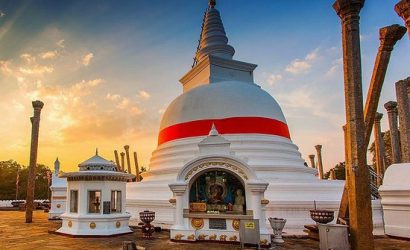Matale
It is known as Pannagama – பன்னாகமம் (“Five Headed Serpent” in English) of Goddess Muthumari in Sri Muthumariamman Temple, Matale.
The most important historical incident in Matale is writing the thripitaka which was held during the ruling period of king Walagamba in 89-77 BC in Aluvihare, Therefore this is permanent evidence for human settlements in Matale before centuries of years. There are folklores receipt of the name “Matale”. It is mentioned that “Mahatala” become as Matale because it is placed in a valley and also the King Gajaba invaded “Soli Rata” and brought and settled 12,000 peoples in here it is become as Matale. There are number of folktales about the name of Matale. Mahathala has been used for large valley area. It gradually converted as Matale.
The Aluvihare Rock Temple that is situated on north side of the city’s suburb, Aluvihare. The historic location where the Pali Canon was written down completely in text on ola (palm) leaves in 29 BCE.
Matale was the site of a major battle in 1848 when the Matale Rebellion started and the British garrison in the Fort MacDowall in Matale was placed under siege by the rebels led by Weera Puran Appu and Gongalegoda Banda.
The city is also the birthplace of Monarawila Keppetipola, a rebel who led the Wellasa rebellion against the British troops. His ancestral home, Kappetipola walawuwa, still exists at Hulangamuwa, Matale.
Culture and History
The culture of Sri Lanka mixes modern elements with traditional aspects and is known for its regional diversity. Sri Lankan culture has long been influenced by the heritage of Theravada Buddhism passed on from India, and the religion’s legacy is particularly strong in Sri Lanka’s southern and central regions. South Indian cultural influences are especially pronounced in the northernmost reaches of the country. The history of colonial occupation has also left a mark on Sri Lanka’s identity, with Portuguese, Dutch, and British elements having intermingled with various traditional facets of Sri Lankan culture. Additionally, Indonesian culture has also influenced certain aspects of Sri Lankan culture. Culturally, Sri Lanka possesses strong links to both India and Southeast Asia.


